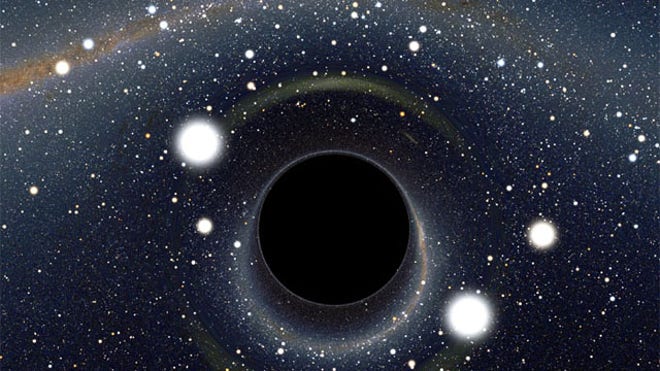Taking a picture of a black hole, an object so gravitationally bound that not even photons of light can escape, sounds like an oxymoron, but astronomers this week will attempt to do just that.
What they're hoping to glimpse is something called the "event horizon" -- the swirl of matter and energy that are visible around the rim of the black hole just before it falls into the abyss.
"Even five years ago, such a proposal would not have seemed credible," Sheperd Doeleman, assistant director of the Haystack Observatory at the Massachusetts Institute of Technology and the lead researcher on the project, called the Event Horizon Telescope, said in a press release.
"Now we have the technological means to take a stab at it," he added.
The target for the shoot is the supermassive black hole that lives in the heart of our galaxy, the Milky Way. It's about 4 million times as massive as the sun, but it's extremely compressed and far away, nearly 26,000 light-years. To astronomers, it's like looking at a grapefruit on the moon.
To see something that small and that far away, you need a very big telescope -- something Earth-sized ought to do it.
To that end, astronomers will attempt to link up to 50 radio telescopes scattered around the globe, including the Submillimeter Telescope on Mt. Graham in Arizona, telescopes on Mauna Kea in Hawaii and the Combined Array for Research in Millimeter-wave Astronomy in California. The global array will include several radio telescopes in Europe, a 10-meter dish at the South Pole and potentially a 15-meter antenna atop a 15,000-foot peak in Mexico.
"In essence, we are making a virtual telescope with a mirror that is as big as the Earth," Doeleman said.
Black holes were first suggested by Albert Einstein's General Theory of Relativity. Decades of research and observations have provided evidence of their existence, but it has never been possible to directly observe and image one.
"We will be able to actually see what happens very close to the horizon of a black hole, which is the strongest gravitational field you can find in the universe," said Dimitrios Psaltis, an associate professor of astrophysics at the Steward Observatory.
General relativity predicts that the bright outline defining the black hole's shadow must be a perfect circle.
"If we find the black hole's shadow to be oblate instead of circular,it means Einstein's General Theory of Relativity must be flawed," Psaltis said. "But even if we find no deviation from general relativity, all these processes will help us understand the fundamental aspects of the theory much better."
I'd just like to see what one looks like.




